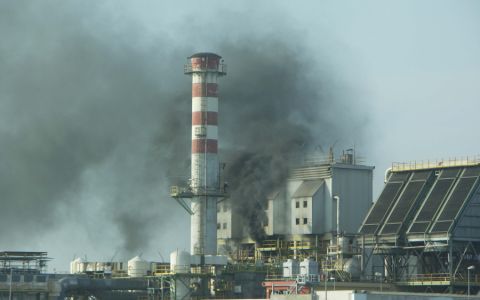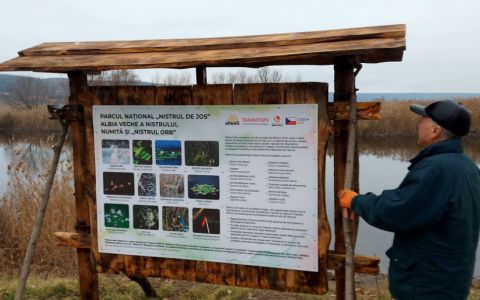Experts from UNESCO's World Heritage Committee, meeting in New Zealand last week, suggested Prague should reconsider the planned construction of several new skyscrapers in the district of Pankrac. The Committee said the plans should respect the skyline of Prague's historic centre, which was one of the main reasons Prague was included on UNESCO's list of World Heritage Sites.
With its thousands of square metres of potential building ground, Pankrác Plain has always attracted builders and investors. During the socialist era, it was to become an administrative and leisure centre for people from the nearby housing estates, but currently, three individually standing skyscrapers is all that has been left from those times. The buildings were nicknamed "vykotlané zuby" ("hollow teeth"), which they resemble when you look at the skyline from Prague Castle. One of those buildings is the shell of what was to become the main centre of the former Czechoslovak Radio. Construction started in 1976, but the building has never been finished. At 109 metres, it remains the highest building in the Czech Republic.
In recent years, skyscrapers have become a hot issue again. An investor presented a radical plan to develop Pankrác Plain; this includes completion of the abandoned Radio centre, and constructing, among other things, the two skyscrapers. These plans prompted the present dispute with UNESCO. Investors argue that with three high-rise buildings already standing on the horizon, it doesn't really matter if they are joined by a few more. Many conservationists and a number of civic associations disagree. Martin Skalský is the chairman of the Centre for Citizen Support of the Arnika environmental NGO.
"We have been following the case since we were established about six years ago, and from our point of view, it's a kind of model case of Prague because the construction of Pankrác Plain violates the urban plan of Prague, and it causes environmental problems in the city It also impacts the citizens in the area of Prague 4, so we are trying to solve it because there are a lot of similar cases like this, and we would like to show the broader problem of the city."
With a popular and cheap market place already razed to the ground and to be replaced with a modern shopping centre with thousands of parking places, and with dozens of administrative buildings cropping up in the surrounding area, the historical skyline may not be the desired by the people who live in Pankrac. Vít Janoušek, vice-chairman of the Občanská iniciativa Pankráce civic association believes that offices are not what people from the neighbourhood really need.
"We think that our inhabitants need civil services and small shops, and they do not need high-rise buildings with offices. Because these offices can only bring the high volume of transportation needs, we are concerned that this volume of transport will have an impact on the air pollution situation and high noise level."
If the investors go ahead with their plan, Prague risks being included on UNESCO's World Heritage in Danger list or being deleted from the list of World Heritage Sites. Vienna faced a similar problem in 2004 when it planned a construction of skyscrapers near the city's main railway station. Its inscription on the World Heritage site was held up, and it was renewed only after changes to the building plan were made. With the latest news from New Zealand, civil activists, like Martin Skalský, finally have a reason to believe that their appeal to UNESCO may bear some fruit after all:
"In last five or six years, we had negotiations with all the governmental authorities, the city of Prague, the ministry of culture, and none of them were interested in trying to solve the problem or to really do something in this case. So we believe that UNESCO is the last authority with whom we could address with this problem. It is most likely they will issue some statement that will criticize the project, and we hope that it will really stop it, but so far it is not really clear."
Whatever the final word from UNESCO will be, one thing is clear. It will definitely take a few more years before the people from Pankrac will live to see some silence. With prices of real estate steadily rising, it is unlikely that investors will miss a chance to make the best of the vast building grounds just within eyeshot from the historical centre of Prague.
Author: Ruth Franková
Source: Radio Prague






